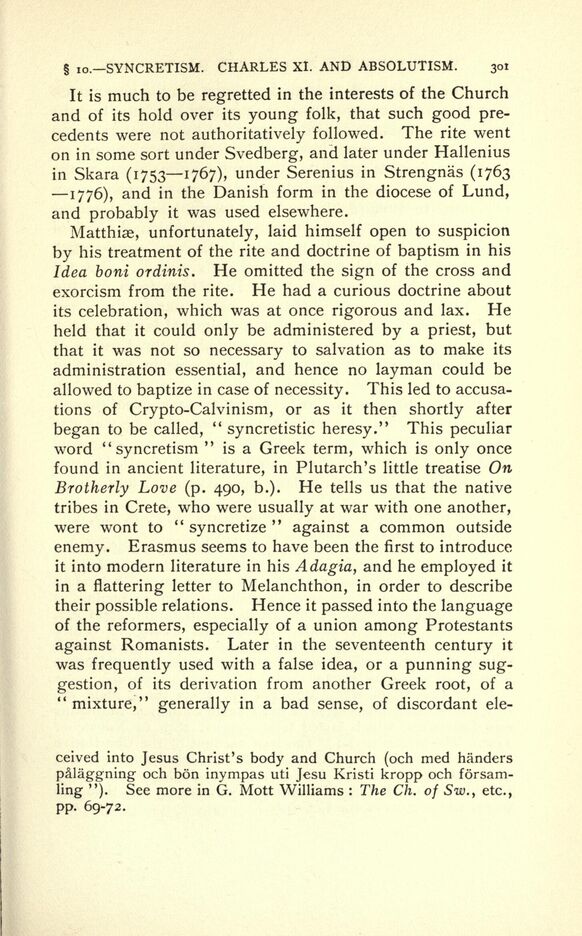
Full resolution (JPEG) - On this page / på denna sida - VI. From the Upsala-möte to the death of Charles XII. The Great Kings and the Great Bishops (1592—1718 A.D.)

<< prev. page << föreg. sida << >> nästa sida >> next page >>
Below is the raw OCR text
from the above scanned image.
Do you see an error? Proofread the page now!
Här nedan syns maskintolkade texten från faksimilbilden ovan.
Ser du något fel? Korrekturläs sidan nu!
This page has never been proofread. / Denna sida har aldrig korrekturlästs.
io. SYNCRETISM. CHARLES XI. AND ABSOLUTISM. 301
It is much to be regretted in the interests of the Church
and of its hold over its young folk, that such good pre
cedents were not authoritatively followed. The rite went
on in some sort under Svedberg, and later under Hallenius
in Skara (17531767), under Serenius in Strengnas (1763
1776), and in the Danish form in the diocese of Lund,
and probably it was used elsewhere.
Matthise, unfortunately, laid himself open to suspicion
by his treatment of the rite and doctrine of baptism in his
Idea boni ordinis. He omitted the sign of the cross and
exorcism from the rite. He had a curious doctrine about
its celebration, which was at once rigorous and lax. He
held that it could only be administered by a priest, but
that it was not so necessary to salvation as to make its
administration essential, and hence no layman could be
allowed to baptize in case of necessity. This led to accusa
tions of Crypto-Calvinism, or as it then shortly after
began to be called,
"
syncretistic heresy."
This peculiar
word syncretism
"
is a Greek term, which is only once
found in ancient literature, in Plutarch s little treatise On
Brotherly Love (p. 490, b.). He tells us that the native
tribes in Crete, who were usually at war with one another,
were wont to
"
syncretize
"
against a common outside
enemy. Erasmus seems to have been the first to introduce
it into modern literature in his Adagia, and he employed it
in a flattering letter to Melanchthon, in order to describe
their possible relations. Hence it passed into the language
of the reformers, especially of a union among Protestants
against Romanists. Later in the seventeenth century it
was frequently used with a false idea, or a punning sug
gestion, of its derivation from another Greek root, of a
"
mixture," generally in a bad sense, of discordant ele-
ceived into Jesus Christ s body and Church (och med banders
palaggning och bon inympas uti Jesu Kristi kropp och forsam-
ling ").
See more in G. Mott Williams : The Ch. of Sw. y etc.,
pp. 69-72.
<< prev. page << föreg. sida << >> nästa sida >> next page >>